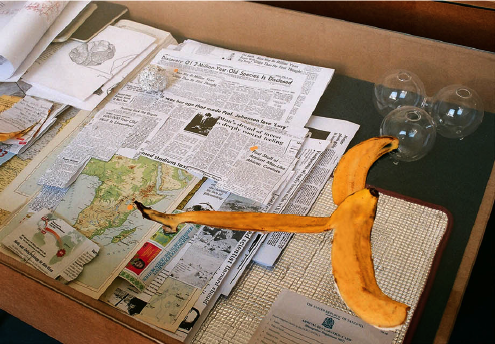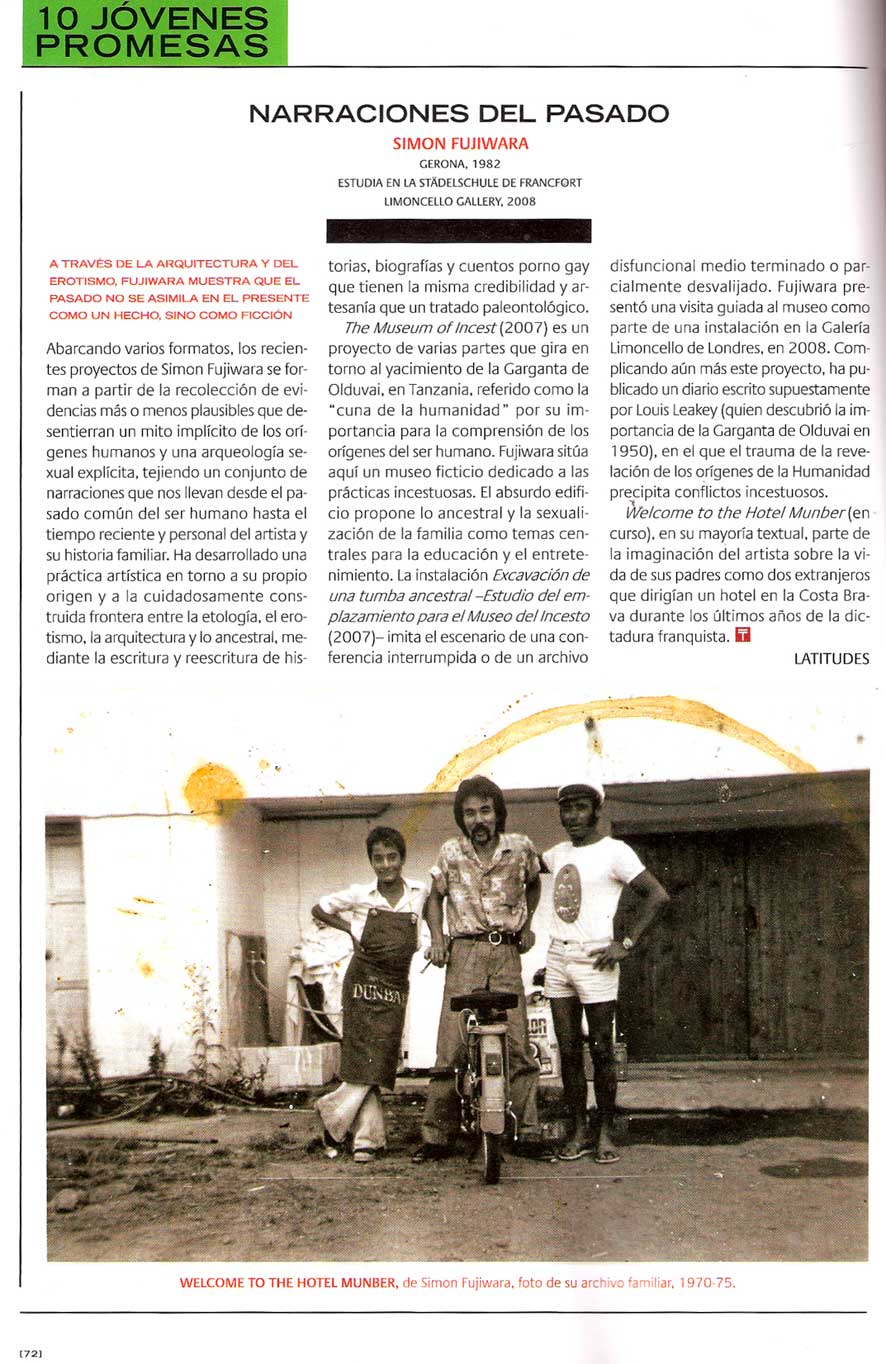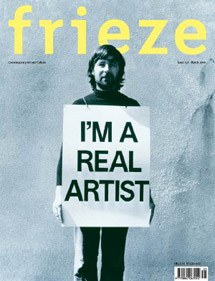Latitudes' Projects Timeline with Dipity
Sat, Apr 18 2009
2006 projects
2007 projects
2008 projects
2009 projects
We have introduced a new feature with Dipity on www.lttds.org: a timeline (viewable also as a flipbook or map) to browse our projects since 2005 – find it on our website here.
New blog design | Nuevo diseño del blog
Sun, Apr 5 2009_ENG_
As you might have noticed we have updated the look of the blog introducing a new commenting system (Disqus) and the possibility of logging in and commenting with your facebook identity. As always, there are three ways to keep up-to-date with our projects: keep an eye on this blog (see Site Feed link to the right) and website (www.lttds.org), sign up for our email newsletter (see form here) or via our facebook group.
We look forward to reading your comments!
_ES_
Como habreis notado, hemos actualizado el diseño del blog introduciendo nuevos elementos como un nuevo sistema para realizar comentarios (Disqus) y la posibilidad de acceder y dejar tus comentarios a través de facebook. Las tres vías para mantenerse al día con nuestros proyectos siguen siendo: leyendo este blog (véase link al Site Feed a la derecha) y la web (www.lttds.org), subscribiéndote a nuestra newsletter (véase formulario aquí) o a través de nuestro facebook group.
Esperamos vuestros comentarios!
ACCA premia el ciclo de exposiciones de arte contemporáneo del Nivell Zero-Fundació Suñol
Fri, Apr 3 2009
Ayer noche tuvo lugar la 25a edición de los Premios ACCA de la Crítica de Arte otorgados por la Associació Catalana de Crítics d'Art (ACCA) a las exposiciones, iniciativas y publicaciones que marcaron la temporada artística 2008.
El Nivell Zero de la Fundació Suñol recibió el premio al ciclo de exposiciones de arte contemporáneo. Sergi Aguilar, el director de la fundación, recogió el premio y agradeció al Sr. Suñol la confianza depositada en él, así como a la Associació y al público por el apoyo ofrecido a una "iniciativa privada que trabaja con vocación de ofrecer una programación pública".
Durante la temporada 2008, el Nivell Zero acogió dos proyectos comisariados por Latitudes: la proyección del ciclo itinerante de video y film 'Una estaca en el lodo, un hoyo en la cinta. El campo expandido del Land Art, 1968-2008' (6 y 8 Julio) y la exposición y proyecto público 'Lawrence Weiner: La cresta de la ola' (Octubre–Noviembre) (véase foto abajo). ¡Contentos de aportar nuestro granito de arena!
FUNDACIÓ SUÑOL
Passeig de Gràcia, 98
08008 Barcelona
www.fundaciosunol.org
Latitudes' 4th anniversary
Thu, Apr 2 2009This April marks four years since we started working as Latitudes. Coinciding with next year 5th anniversary, we will produce a small booklet comprising a selection the projects we've been involved in.
We would like to thank our families and friends for their ongoing support and for offering a spare room whenever needed ;-)
Max & Mariana
Catalan Pavilion, 53rd Venice Biennale: "Venezia-Catalunya 2009. La Comunitat Inconfessable"
Tue, Mar 24 2009
'Venezia, Catalunya 2009. La Comunitat Inconfessable'
Curated by: Valentín Roma
Participating artists: Sitesize (Joan Vila-Puig and Elvira Pujol), Technologies to the People (Daniel G. Andújar) and Archivo F.X. (Pedro G. Romero)
Location: Magazzini del Sale #3, Dorsoduro, Venice
Support: Institut Ramon Llull (overall production & coordination), MACBA (executive production) as well as the Kunstverein Stuttgart (production of Daniel G. Andújar's work), Ateneu Obrer Popular de Barcelona, ZEMOS98, Repensar Barcelona, DPC estudi and ACTAR who will co-publish and distribute the publication, amongst others.
As announced previously (see post 1 October 2008), Catalunya will have its first pavilion representation within the Eventi Collaterali in the forthcoming edition of the Venice Biennale titled 'Fare Mondi/Making worlds' (7 June–22 November 2009). The first press conference (see slideshow above) took place yesterday evening at the Istituto Italiano di Cultura di Barcellona, with Josep Bargalló (director, Institut Ramon Llull); Josep-Lluís Carod-Rovira (Vice-president of the Catalan Government and on the directing board of the Institut) and pavilion curator Valentín Roma.
The Catalan Pavilion will open during the first week of June with 'La Comunitat Inconfessable' a project curated by Roma (read about the selection process here) and including Sitesize (Joan Vila-Puig and Elvira Pujol), Technologies to the People (Daniel G. Andújar) and Archivo FX (Pedro G. Romero). The project will be shown in the 600 square metre space of the Magazzini del Sale #3, which is normally assigned by the Venetian townhall to the nearby Accademia di Belle Arti di Venezia.
'La Comunitat Incofessable' takes its title from Maurice Blanchot's 1983 book 'La Communauté inavouable' (The Unavowable Community), and from Blanchot's inquiry into the nature and possibility of community and interpreting communism as 'that which creates community'. The thread between the three projects is the questioning of the single authorship, as the artists constantly appropriate preexistent materials (photographs, data...) and reconfigure new archives, new readings of these materials. The project is divided into three parts: the exhibition taking Blanchot's reference to the library as a space for knowledge; the catalogue (with reprinted texts by Blanchot, as well as Jean Luc Nancy, Giorgio Agamben, Philippe Lacoue-Labarthe, etc.) as well as essays and interviews related to the artists projects by Gerard Horta, Iris Dessler, Jacob Lillemose, Manuel Delgado amongst others) and a website which will host a vast archive around the notion of communality.
During yesterday's press presentation, Roma briefly presented the conceptual lines and academic aspirations of the exhibition. Curiously, considering that the project reflects on the use and reuse of images, archives and libraries – whether concerning territory and landscape (Sitesize), geopolitical changes between the fall of the Berlin wall and 9-11 (Daniel G. Andújar) or information about iconoclasm in Spain (Pedro G. Romero) – there was no visual material shown during the presentation, and no photo documentation related to the artists in the press packs. We will have to wait for the artists' presentations in a month's time at MACBA, as announced yesterday (date TBC).
Curated by: Valentín Roma
Participating artists: Sitesize (Joan Vila-Puig and Elvira Pujol), Technologies to the People (Daniel G. Andújar) and Archivo F.X. (Pedro G. Romero)
Location: Magazzini del Sale #3, Dorsoduro, Venice
Support: Institut Ramon Llull (overall production & coordination), MACBA (executive production) as well as the Kunstverein Stuttgart (production of Daniel G. Andújar's work), Ateneu Obrer Popular de Barcelona, ZEMOS98, Repensar Barcelona, DPC estudi and ACTAR who will co-publish and distribute the publication, amongst others.
As announced previously (see post 1 October 2008), Catalunya will have its first pavilion representation within the Eventi Collaterali in the forthcoming edition of the Venice Biennale titled 'Fare Mondi/Making worlds' (7 June–22 November 2009). The first press conference (see slideshow above) took place yesterday evening at the Istituto Italiano di Cultura di Barcellona, with Josep Bargalló (director, Institut Ramon Llull); Josep-Lluís Carod-Rovira (Vice-president of the Catalan Government and on the directing board of the Institut) and pavilion curator Valentín Roma.
The Catalan Pavilion will open during the first week of June with 'La Comunitat Inconfessable' a project curated by Roma (read about the selection process here) and including Sitesize (Joan Vila-Puig and Elvira Pujol), Technologies to the People (Daniel G. Andújar) and Archivo FX (Pedro G. Romero). The project will be shown in the 600 square metre space of the Magazzini del Sale #3, which is normally assigned by the Venetian townhall to the nearby Accademia di Belle Arti di Venezia.
'La Comunitat Incofessable' takes its title from Maurice Blanchot's 1983 book 'La Communauté inavouable' (The Unavowable Community), and from Blanchot's inquiry into the nature and possibility of community and interpreting communism as 'that which creates community'. The thread between the three projects is the questioning of the single authorship, as the artists constantly appropriate preexistent materials (photographs, data...) and reconfigure new archives, new readings of these materials. The project is divided into three parts: the exhibition taking Blanchot's reference to the library as a space for knowledge; the catalogue (with reprinted texts by Blanchot, as well as Jean Luc Nancy, Giorgio Agamben, Philippe Lacoue-Labarthe, etc.) as well as essays and interviews related to the artists projects by Gerard Horta, Iris Dessler, Jacob Lillemose, Manuel Delgado amongst others) and a website which will host a vast archive around the notion of communality.
During yesterday's press presentation, Roma briefly presented the conceptual lines and academic aspirations of the exhibition. Curiously, considering that the project reflects on the use and reuse of images, archives and libraries – whether concerning territory and landscape (Sitesize), geopolitical changes between the fall of the Berlin wall and 9-11 (Daniel G. Andújar) or information about iconoclasm in Spain (Pedro G. Romero) – there was no visual material shown during the presentation, and no photo documentation related to the artists in the press packs. We will have to wait for the artists' presentations in a month's time at MACBA, as announced yesterday (date TBC).
Roma also commented on the challenges in presenting ongoing research and extensive archival materials in an attractive exhibition format – those who saw Pedro G. Romero's 'F.X. Archive: The Empty City' at the Fundació Tàpies in 2006 might remember a huge scaffolding structure filled with the buzz of printers, flashing TV monitors, wires and stacks of paper. Josep Bargalló (director of the Institut Ramon Llull) and Josep-Lluís Carod-Rovira's speeches predictably praised the historical role of Catalunya as a center of debate, innovative cultural society and the pavilion's aim to make the take note of Catalan cultural production.
Why is it that in every such press conference the first question from the floor always related to the budget? In this case the exhibition's coffers total €500,000, plus a exceedingly generous €200,000 for the publication (in Catalan, Italian, Spanish and English) plus c. €5,000 for a website. The agreement with the city of Venice is that they could use the Magazzini del Sale #3 for no rental fee but, according to Bargalló, they would contribute towards the restauration of the spaces to the tune of €40,000, adding up to €745,000. On top of that are curatorial and artists fees, press & marketing, flights, accommodation, opening events, invitations, etc. A hearty budget.
More info: www.veneziacatalunya2009.cat
RELATED LINKS:
Click here to read the full list of participating artists in 'Fare Mondi/Making Worlds';
Here to read the 53rd Venice Biennale Press Release (dated 23 March 2009);
Here to read the full list of Eventi CollateraliHere to read about the Catalan project
[Images: Press conference and (right) Pavilion curator Valentín Roma. Photos: Latitudes | www.lttds.org]
SAVE THE DATE: 14 and 28th May 2009, exhibitions in Naples and Madrid
Sun, Mar 15 2009In May 2009 Latitudes is curating two exhibitions: 'Provenances' (14 May–14 September) at Umberto di Marino in Naples and 'The Garden of Forking Paths' (28 May–18 July) at Maisterravalbuena in Madrid.
'The Garden of Forking Paths' will present the work of five artist-duos: Eric Bell & Kristoffer Frick (1985 St. Catharines, Canada. 1985 Nuertingen, Germany. Both live in Frankfurt, Germany); Haris Epaminonda & Daniel Gustav Cramer (1980 Nicosia, Cyprus; 1975 Düsseldorf, Germany. Both live in Berlin, Germany); huber.huber (1975 Münsterlingen, Switzerland. Both live in Zurich, Switzerland); Leslie Hewitt & Matt Keegan (1977 Saint Albans, New York, USA; 1976 Manhasset, New York, USA. Both live in New York, USA) and Nashashibi/Skaer (1973 Croydon, UK; 1975 Cambridge, UK. Both live in London, UK). 'The Garden of Forking Paths' considers duality, simultaneity and proliferation in a context where the exhibition will be hosted and curated by duos (Maisterravalbuena [Pedro Maisterra & Belén Valbuena] and Latitudes [Max Andrews & Mariana Cánepa Luna], respectively).
MAISTERRAVALBUENA
Doctor Fourquet 1
28012 Madrid, SPAIN
Opening hours: Mon-Fri 11-14;16-20.30; Sat 11-14pm
www.maisterravalbuena.com
'Provenances' will consist of three interlinked solo presentations with works by Erick Beltrán (1974 Mexico City, Mexico. Lives in Barcelona, Spain), Jordi Mitjà (1970 Figueres, Spain. Lives in Lladó, Spain) and Simon Fujiwara (1982, London, UK. Lives in Berlin, Germany/London, UK), and act as a reflection on the present and the past, the heritage industry and the museum-ification of culture.
UMBERTO DI MARINO
Via Alabardieri 1, Piazza dei Martiri
80121 Napoli, ITALY
Opening hours: Tue-Sat 10.30-13.30;16-20h; Monday: 4-8pm
www.galleriaumbertodimarino.com
Bell, Beltrán, Cramer, Epaminonda, Frick, Fujiwara, Hewitt, huber.huber, Keegan, Maisterravalbuena, Mitjà, Nashashibi/Skaer, Umberto di Marino
'The Garden of Forking Paths' will present the work of five artist-duos: Eric Bell & Kristoffer Frick (1985 St. Catharines, Canada. 1985 Nuertingen, Germany. Both live in Frankfurt, Germany); Haris Epaminonda & Daniel Gustav Cramer (1980 Nicosia, Cyprus; 1975 Düsseldorf, Germany. Both live in Berlin, Germany); huber.huber (1975 Münsterlingen, Switzerland. Both live in Zurich, Switzerland); Leslie Hewitt & Matt Keegan (1977 Saint Albans, New York, USA; 1976 Manhasset, New York, USA. Both live in New York, USA) and Nashashibi/Skaer (1973 Croydon, UK; 1975 Cambridge, UK. Both live in London, UK). 'The Garden of Forking Paths' considers duality, simultaneity and proliferation in a context where the exhibition will be hosted and curated by duos (Maisterravalbuena [Pedro Maisterra & Belén Valbuena] and Latitudes [Max Andrews & Mariana Cánepa Luna], respectively).
MAISTERRAVALBUENA
Doctor Fourquet 1
28012 Madrid, SPAIN
Opening hours: Mon-Fri 11-14;16-20.30; Sat 11-14pm
www.maisterravalbuena.com
Simon Fujiwara's Museum of Incest.
'Provenances' will consist of three interlinked solo presentations with works by Erick Beltrán (1974 Mexico City, Mexico. Lives in Barcelona, Spain), Jordi Mitjà (1970 Figueres, Spain. Lives in Lladó, Spain) and Simon Fujiwara (1982, London, UK. Lives in Berlin, Germany/London, UK), and act as a reflection on the present and the past, the heritage industry and the museum-ification of culture.
UMBERTO DI MARINO
Via Alabardieri 1, Piazza dei Martiri
80121 Napoli, ITALY
Opening hours: Tue-Sat 10.30-13.30;16-20h; Monday: 4-8pm
www.galleriaumbertodimarino.com
Report from the 2nd Canary Islands Biennial of Architecture, Art and Landscape
Sun, Mar 8 2009'Silencio' (7 March–3 May 2009), the recently-inaugurated 'exhibition phase' of the 2nd Biennial of the Canary Islands, unfolds in various venues in both capitals of the archipelago: Las Palmas de Gran Canaria (with the sub-theme 'Inmersions. Landscape of Networks: Systems, Meshes and Structures') and in Santa Cruz de Tenerife (with 'Scenes and Scenarios. Paradoxes of the wellbeing: The Consumption of the imaginary and the imaginery of consumption'). The exhibitions follow the 'documentary phase' that took place between the December 08 and February 09.
Directed by Canarian architect Juan Manuel Palerm Salazar, the exhibition takes as its starting point 'silence' "as the profound instant in which we can discover and analyse the noises of contemporary society". Dispersed through the many venues in Las Palmas (SEE SLIDESHOW ABOVE: INFECAR, Centro Atlántico de Arte Moderno (CAAM), CAAM San Antonio Abad, Casa de Colón, Gabinete Literario, Sala de Arte Regenta) and Santa Cruz de Tenerife (SEE SLIDESHOW BELOW: Tenerife Espacio de las Artes (TEA), Espacio Cultural El Tanque, Sala de Arte Contemporáneo del Gobierno de Canarias, Museo de Bellas Artes, Sala Mac, Círculo de Bellas Artes de Tenerife and COAC Canarias), the biennial mostly spoke in architecture terms to the visitor, by means of maquettes; lightboxes filled with renderings of landscaping projects in sites including Porto, Salerno, Benidorm or Venice; slideshows in fancy flatscreens; A1-sized boards with drawings, photographs, data, etc. Each of the venues welcomed the visitor with a white board containing a seemingly complex diagram with interlinked key words (landscape, perception, island, system, use/abuse...) that mapped out the core concepts intended to be developed throughout the sixteen venues – see image #5 of slideshow above.
The Biennial also hosts three linked exhibitions organised by external curators: "Periferia" by Rosa Olivares at CAAM (including slick photographic works from the 1990s and early 2000 by Olivares' favourites such as Montserrat Soto, Sergio Belinchón, Francesco Jodice, Gabriele Basilico...), "Coexistencias" by Orlando Britto at La Regenta (with Grego Matos, Moataz Nasr, Javier Caballero, Eberhard Bosslet and a clumsy piece by Antonio Díaz Grande including 45 portraits of people doing the slitty-eyed gesture accompanied by 100 chinese lucky cats waving their arms) and "Plain Air. Paisajes Extra-Ordinarios" by Christian Vivero-Fauné (with works by Ivan Navarro, Patrick Hamilton, Jota Castro, Graham Dolphin...).
The strength of this year's Biennial lies in nine specially commissioned works, which include the 5-screen video 'Sin Límite' (2009) by Julian Rosefeldt (though poorly installed at TEA) and the 2-screen video 'Maspalomas' (2008-9) by Dias & Riedweg (though only one screen worked at the opening), as well as a 3-screen video 'Atlántida' (2008) by Olga Mink + Scanner (images here).
The exhibition opening is followed by an impressive calendar of public programme with one or two-day seminars (15 in total), keynote presentations (9 in total, including Kengo Kuma, Peter Greenaway, James Turrell, Paolo Burgi, Mark Gisbourne), workshops, theatre performances, open-submission competitions and round tables, mostly aimed at involving the architecture practitioners and students.
RELATED LINKS
Read of the Second Biennial here (Elena Vozmediano, 'Contradicciones y confusiones de la bienal de Canarias, El Cultural, 20.03.09); here (Fietta Jarque, 'Cacofonía del Paisaje', suplemento Babelia, 21.03.09) and here (Fredy Massad, 'Buscar su lugar', ABCD, 22.03.09).
Click here to watch a 30' documentary broadcasted on the Spanish TVE 2's programme Metrópolis on 30.03.09
RELATED LINKS
Read of the Second Biennial here (Elena Vozmediano, 'Contradicciones y confusiones de la bienal de Canarias, El Cultural, 20.03.09); here (Fietta Jarque, 'Cacofonía del Paisaje', suplemento Babelia, 21.03.09) and here (Fredy Massad, 'Buscar su lugar', ABCD, 22.03.09).
Click here to watch a 30' documentary broadcasted on the Spanish TVE 2's programme Metrópolis on 30.03.09
Artículo sobre Simon Fujiwara en 'Descubrir el Arte'...la versión íntegra
Sun, Mar 1 2009En ocasión del 10º aniversario de la popular revista 'Descubrir el Arte', Rafael Doctor (director del MUSAC, León, hasta hace poco) invitó a 10 comisarios, incluyendo Latitudes, a escribir un perfil de 750 palabras de un 'artista emergente' de su elección.
Tres meses después de enviar nuestro texto sobre el trabajo del artista inglés Simon Fujiwara, y sin haber tenido contacto alguno con el/la editor de la revista, la hemos comprado y comprobado que el texto publicado ha sido reducido más de un 50% sin nuestro conocimiento y/o consentimiento. Hubiésemos estado más que dispuestos a reducir su longitud si hubiese sido necesario con el fin de lograr coherencia y evitar sacrificar partes fundamentales del texto que han sido eliminadas sin más. Desafortunadamente, el texto resultante no refleja ni el profundo trabajo narrativo de Simon ni nuestra labor como escritores, sin olvidar el respeto a los derechos de autor.
A continuación presentamos las dos versiones: el texto original (no publicado) y la versión que aparece en la revista. Asimismo, podeis descargar el texto completo con imágenes en nuestro archivo de textos (en español o inglés).
Como 'happy ending', nos complace anunciar que Simon Fujiwara es uno de los tres artistas que hemos invitado a la exposición 'Provenances' que inaugurará el 14 de Mayo en Umberto di Marino, Nápoles. Más detalles aquí.
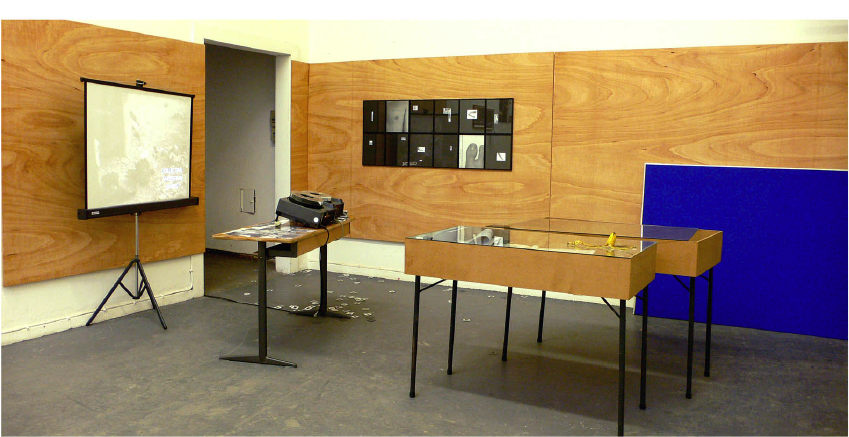
Simon Fujiwara
Abarcando varios formatos – performances/conferencias, publicaciones ficticias y colecciones de diversos artículos y objetos – los recientes proyectos del artista berlinés Simon Fujiwara (1982) se forman a partir de la recolección de evidencias más o menos plausibles. Cada una de ellas desentierra un mito implícito de los orígenes humanos y una arqueología sexual explícita, tejiendo un conjunto de narraciones que nos llevan desde el pasado común de los hombres, hasta al tiempo reciente y personal de Fujiwara y su historia familiar. Hijo de madre británica y padre japonés, el artista ha desarrollado una práctica artística entorno a su propio origen y a la cuidadosamente construida frontera límite entre la etología, el erotismo, la arquitectura y lo ancestral, mediante la escritura y re-escritura de historias, biografías y cuentos porno gay que tienen la misma credibilidad y artesanía que un tratado paleontológico.
The Museum of Incest (El museo del incesto) (2007–) es un proyecto que gira entorno al yacimiento la Garganta de Olduvai, en el norte de Tanzania, a menudo referido como la 'cuna de la humanidad' debido a su importancia para la comprensión de los orígenes del hombre. La Garganta ha dejado al descubierto algunos de los primeros restos de homínidos de más de 2 millones de años de antigüedad, y mediante el análisis de sucesivos depósitos se ha podido estudiar la evolución del hombre moderno. Fujiwara ha tomado este significativo emplazamiento para ubicar un museo ficticio dedicado a un tema poco prometedor: las prácticas incestuosas. Dividido en tres escenas – 'Antiguo', 'Moderno' y 'Edad Media' (donde una serie de actores interpretan los últimos días de Sodoma y Gomorra) – y completado por una galería subterránea y un café, el absurdo edificio propone lo ancestral y la sexualización de la familia como los temas centrales para la educación y el entretenimiento del visitante, mediante unas instalaciones que estimularián la economía local. El pícaro museo de Fujiwara es deliberadamente espúreo, una atracción museística donde la identidad y la sexualidad se mantienen ambiguos.
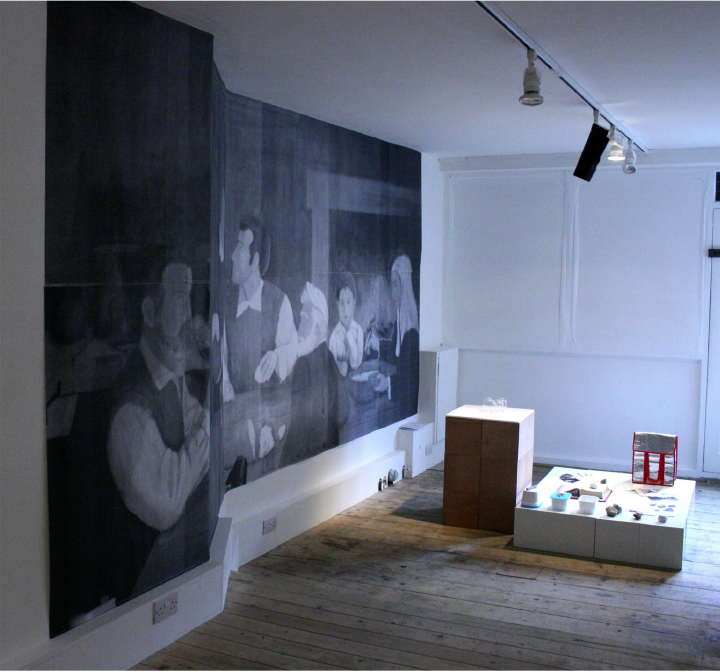
Tras un viaje a Tanzania en 2007, Fujiwara produjo Ancestral Grave Dig – A Site Survey for the Museum of Incest (Excavación de una tumba ancestral – Estudio del emplazamiento para el Museo del Incesto), una instalación que parecía imitar el escenario de una conferencia interrumpida o de un archivo disfuncional que parecía encontrarse medio terminado o que había sido parcialmente vandalizado. Diapositivas de la supuesta expedición se dispersaban por el suelo o se proyectaban sobre una pantalla y varias vitrinas contenían artículos ilegítimos etiquetados desordenadamente ('fragmentos no utilizados por nuestros antepasados homínidos'). Mapas, dibujos, recortes de periódico que destacan titulares como 'Cráneo de 600,000 años de antigüedad es desenterrado' y resbaladizas pistas (una piel de plátano) se presentan junto a la maqueta del polémico museo. La propuesta de la forma del museo en sí (tres ámbitos esféricos interrelacionados) se tomó como si se tratase de un acto creativo endogámico, a partir de un diseño concebido por el padre del artista para una pecera.Fujiwara presentó una visita guiada al museo como parte de una instalación que realizó en la galería Limoncello en Londres, en abril de 2008. Detallando su inspiración para la disposición del museo a través de un pase de diapositivas complementado con fotografías familiares, la presentación tuvo lugar enfrente de una reproducción de un mural que representa una escena familiar, otro de los diseños de su padre. Complicando aún más este extenso proyecto, el artista ha publicado un texto en forma de diario supuestamente escrito por el renombrado arqueólogo Louis Leakey (quien descubrió la importancia de la Garganta de Olduvai entorno a 1950), en las que el trauma de la revelación de los orígenes de la humanidad parecía precipitar conflictos incestuosos.
The Erotics Project (El proyecto de la erótica) (en curso) es en su mayoría textual, parte de la imaginación del artista sobre la vida de sus padres durante los años setenta, antes de que él naciese, como dos extranjeros que dirigían un hotel turístico cerca de Sant Feliu de Guíxols (Costa Brava) durante los últimos años de la dictadura franquista. Esto es lo que sabemos con certeza. Sin embargo, Fujiwara ha convertido esta realidad en el escenario de una serie de cuentos basados en hechos reales que ha publicado en la revista erótico-homosexual Straight to Hell Magazine: The Manhattan Review of Unnatural Act. Ambientado en el contexto de la supresión sexual, militar, social y política forzada por el régimen franquista, 'Paquito: Egg White Jack-Off', por ejemplo, relata las exploraciones eróticas entorno a los ingredientes de la famosa tortilla que se cocinaba en el Hotel Munber – famosa entre turistas y militares – mientras que fantasea entorno a Paquito, la 'mano ingeniosa de la cocina'.
Recientemente el comisario y crítico Nicolas Bourriaud, en ampliación a las reflexiones por Peter Osbourne y otros, ha declarado que en lugar de tratar la historia como un catálogo o un repertorio como se hizo en el Posmodernismo, uno de los ejes principales del arte actual tiene que ver con "el pasado definido a través de territorio y uso, articulado en y a través del espacio"1. En la producción de un arte que despliega signos, historias y lugares, y articulada a través de diversos modos y secuencias, Fujiwara parece ejemplar de este modo de pensamiento a través de la arquitectura y del erotismo: el pasado no es asimilado en el presente como un hecho, sino que se despliega como una ficción.
– Latitudes (Max Andrews & Mariana Cánepa Luna)
[1] Nicolas Bourriaud, entrevista con Aude Launay, O2, número 47, Otoño 2008, p. 43.
A continuación el (altamente editado) texto como aparece publicado en 'Descubrir el Arte', Marzo 2009, pág. 72 (haz click sobre la imagen para ampliar su contenido).
[Imágenes (de arriba a abajo): Instalación de Museum of Incest: A Site Survey (2008, Frankfurt am Main); detalle vitrina de la misma instalación; instalación de Welcome to the Museum of Incest: A guided Tour (2008, Limoncello Gallery, London). Cortesía del artista]
censorship, Derechos de autor, Descubrir el Arte, revista, Simon Fujiwara, textos, Umberto di Marino
Tres meses después de enviar nuestro texto sobre el trabajo del artista inglés Simon Fujiwara, y sin haber tenido contacto alguno con el/la editor de la revista, la hemos comprado y comprobado que el texto publicado ha sido reducido más de un 50% sin nuestro conocimiento y/o consentimiento. Hubiésemos estado más que dispuestos a reducir su longitud si hubiese sido necesario con el fin de lograr coherencia y evitar sacrificar partes fundamentales del texto que han sido eliminadas sin más. Desafortunadamente, el texto resultante no refleja ni el profundo trabajo narrativo de Simon ni nuestra labor como escritores, sin olvidar el respeto a los derechos de autor.
A continuación presentamos las dos versiones: el texto original (no publicado) y la versión que aparece en la revista. Asimismo, podeis descargar el texto completo con imágenes en nuestro archivo de textos (en español o inglés).
Como 'happy ending', nos complace anunciar que Simon Fujiwara es uno de los tres artistas que hemos invitado a la exposición 'Provenances' que inaugurará el 14 de Mayo en Umberto di Marino, Nápoles. Más detalles aquí.

Simon Fujiwara
Abarcando varios formatos – performances/conferencias, publicaciones ficticias y colecciones de diversos artículos y objetos – los recientes proyectos del artista berlinés Simon Fujiwara (1982) se forman a partir de la recolección de evidencias más o menos plausibles. Cada una de ellas desentierra un mito implícito de los orígenes humanos y una arqueología sexual explícita, tejiendo un conjunto de narraciones que nos llevan desde el pasado común de los hombres, hasta al tiempo reciente y personal de Fujiwara y su historia familiar. Hijo de madre británica y padre japonés, el artista ha desarrollado una práctica artística entorno a su propio origen y a la cuidadosamente construida frontera límite entre la etología, el erotismo, la arquitectura y lo ancestral, mediante la escritura y re-escritura de historias, biografías y cuentos porno gay que tienen la misma credibilidad y artesanía que un tratado paleontológico.
The Museum of Incest (El museo del incesto) (2007–) es un proyecto que gira entorno al yacimiento la Garganta de Olduvai, en el norte de Tanzania, a menudo referido como la 'cuna de la humanidad' debido a su importancia para la comprensión de los orígenes del hombre. La Garganta ha dejado al descubierto algunos de los primeros restos de homínidos de más de 2 millones de años de antigüedad, y mediante el análisis de sucesivos depósitos se ha podido estudiar la evolución del hombre moderno. Fujiwara ha tomado este significativo emplazamiento para ubicar un museo ficticio dedicado a un tema poco prometedor: las prácticas incestuosas. Dividido en tres escenas – 'Antiguo', 'Moderno' y 'Edad Media' (donde una serie de actores interpretan los últimos días de Sodoma y Gomorra) – y completado por una galería subterránea y un café, el absurdo edificio propone lo ancestral y la sexualización de la familia como los temas centrales para la educación y el entretenimiento del visitante, mediante unas instalaciones que estimularián la economía local. El pícaro museo de Fujiwara es deliberadamente espúreo, una atracción museística donde la identidad y la sexualidad se mantienen ambiguos.

Tras un viaje a Tanzania en 2007, Fujiwara produjo Ancestral Grave Dig – A Site Survey for the Museum of Incest (Excavación de una tumba ancestral – Estudio del emplazamiento para el Museo del Incesto), una instalación que parecía imitar el escenario de una conferencia interrumpida o de un archivo disfuncional que parecía encontrarse medio terminado o que había sido parcialmente vandalizado. Diapositivas de la supuesta expedición se dispersaban por el suelo o se proyectaban sobre una pantalla y varias vitrinas contenían artículos ilegítimos etiquetados desordenadamente ('fragmentos no utilizados por nuestros antepasados homínidos'). Mapas, dibujos, recortes de periódico que destacan titulares como 'Cráneo de 600,000 años de antigüedad es desenterrado' y resbaladizas pistas (una piel de plátano) se presentan junto a la maqueta del polémico museo. La propuesta de la forma del museo en sí (tres ámbitos esféricos interrelacionados) se tomó como si se tratase de un acto creativo endogámico, a partir de un diseño concebido por el padre del artista para una pecera.Fujiwara presentó una visita guiada al museo como parte de una instalación que realizó en la galería Limoncello en Londres, en abril de 2008. Detallando su inspiración para la disposición del museo a través de un pase de diapositivas complementado con fotografías familiares, la presentación tuvo lugar enfrente de una reproducción de un mural que representa una escena familiar, otro de los diseños de su padre. Complicando aún más este extenso proyecto, el artista ha publicado un texto en forma de diario supuestamente escrito por el renombrado arqueólogo Louis Leakey (quien descubrió la importancia de la Garganta de Olduvai entorno a 1950), en las que el trauma de la revelación de los orígenes de la humanidad parecía precipitar conflictos incestuosos.
The Erotics Project (El proyecto de la erótica) (en curso) es en su mayoría textual, parte de la imaginación del artista sobre la vida de sus padres durante los años setenta, antes de que él naciese, como dos extranjeros que dirigían un hotel turístico cerca de Sant Feliu de Guíxols (Costa Brava) durante los últimos años de la dictadura franquista. Esto es lo que sabemos con certeza. Sin embargo, Fujiwara ha convertido esta realidad en el escenario de una serie de cuentos basados en hechos reales que ha publicado en la revista erótico-homosexual Straight to Hell Magazine: The Manhattan Review of Unnatural Act. Ambientado en el contexto de la supresión sexual, militar, social y política forzada por el régimen franquista, 'Paquito: Egg White Jack-Off', por ejemplo, relata las exploraciones eróticas entorno a los ingredientes de la famosa tortilla que se cocinaba en el Hotel Munber – famosa entre turistas y militares – mientras que fantasea entorno a Paquito, la 'mano ingeniosa de la cocina'.
Recientemente el comisario y crítico Nicolas Bourriaud, en ampliación a las reflexiones por Peter Osbourne y otros, ha declarado que en lugar de tratar la historia como un catálogo o un repertorio como se hizo en el Posmodernismo, uno de los ejes principales del arte actual tiene que ver con "el pasado definido a través de territorio y uso, articulado en y a través del espacio"1. En la producción de un arte que despliega signos, historias y lugares, y articulada a través de diversos modos y secuencias, Fujiwara parece ejemplar de este modo de pensamiento a través de la arquitectura y del erotismo: el pasado no es asimilado en el presente como un hecho, sino que se despliega como una ficción.
– Latitudes (Max Andrews & Mariana Cánepa Luna)
[1] Nicolas Bourriaud, entrevista con Aude Launay, O2, número 47, Otoño 2008, p. 43.
A continuación el (altamente editado) texto como aparece publicado en 'Descubrir el Arte', Marzo 2009, pág. 72 (haz click sobre la imagen para ampliar su contenido).
[Imágenes (de arriba a abajo): Instalación de Museum of Incest: A Site Survey (2008, Frankfurt am Main); detalle vitrina de la misma instalación; instalación de Welcome to the Museum of Incest: A guided Tour (2008, Limoncello Gallery, London). Cortesía del artista]
Latitudes reviews MACBA's 'Universal Archive', Frieze #121, March 2009
Mon, Feb 23 2009The forthcoming issue of Frieze magazine (Issue 121, March 2009) includes a review by Max Andrews and Mariana Cánepa Luna on MACBA's exhibition 'Universal Archive' (23 October 2008–6 January 2009).
Below a short extract:
"Of the blockbuster cultural initiatives that have been inspired and hosted by the Catalan capital in 2008, no two could be further apart than Woody Allen’s dismaying Vicky Cristina Barcelona (2008) and the MACBA exhibition ‘Universal Archive: The Condition of the Document and the Modern Photographic Utopia’, a hugely ambitious genealogy of the documentary form of photography (co-produced and touring to the Museu Colecção Berardo-Arte Moderna e Contemporãnea, Lisbon). While Allen’s facile vision of Barcelona and the ‘flamboyant artist’ character of his male lead (played by Javier Bardem) demonstrated the ‘Olé!’ version of the city’s self-branding, ‘Universal Archive’ was difficult to digest by comparison. The exhibition, which comprised some 2,000 photographs, presented a tough and awkward depiction of the grittier sides of the city and uncompromisingly explored the often-unglamorous role of the artist–documentarian within it.
The exhibition’s wonderfully unwieldy scale and its dizzying categorization refused benign consumption. Both its strength and its weakness lay in the fact that it was really three projects under one roof, covering a time span from 1850 to the present day. Even three visits did not truly do the show justice, but its exhausting extent nevertheless perfectly complemented the archival strategies it presented, as if its densely-installed two floors – encompassing legions of framed prints and closely-packed vitrines and several digital slideshows – were inspired by a labyrinthine Borgesian tale. For many visitors, the stamina required to experience it could have been off-putting. There are only so many images of shift workers, tract housing, farmland or grain silos that one can absorb. Yet, attempting to embrace such immense amounts of data – whether Timothy H. O’Sullivan’s territorial surveys of the USA in the 1860s and ’70s, August Sander’s collective portrait of the German people in the late 1920s, or the Mass-Observation movement in Britain from 1937 until the early 1950s – provided the exhilarating, if relentless, basis for the whole project."
...Continue reading on Frieze online.
[Image above: Cover of Frieze's issue 121; Image below: Pere Català Pic, 'Fotomuntatge sobre el Barri Gòtic per a la societat d'Atracció de Forasters de Barcelona', 1935. Arxiu Històric de la Ciutat de Barcelona – Arxiu Fotogràfic.]
Lawrence Weiner's "A CLOTH OF COTTON..." as an action in Barcelona, October 2008
Wed, Feb 18 2009Latitudes' project ‘THE CREST OF A WAVE’ by Lawrence Weiner opened at the Fundació Suñol in Barcelona on 8 October 2008.
The project was divided in four parts – the presentation of an ephemeral sculpture (1) (sugar packets distributed throughout Barcelona), a wall installation (2) and a sound work (3) exhibited at Nivell Zero space of Fundació Suñol, and an action (4), now photo and video documented. The latter was a physical manifestation of the statement common to each part: "A CLOTH OF COTTON WRAPPED AROUND A HORSESHOE OF IRON TOSSED UPON THE CREST OF A WAVE", i.e. an iron horseshoe was wrapped in cotton cloth (here typical Catalan material used for 'farcells'/cloth bundles) and was tossed upon a wave’s crest.
The action took place on the 'rompeolas' of the Barcelona port/ferry terminal on 6 October 2008. Horseshoes were thrown in waves by Lawrence Weiner, Sergi Aguilar (artist and director of Fundació Suñol), and Latitudes (Mariana Cánepa Luna and Max Andrews).
Video shot by Xavier de Luca, and edited by bang!bang!













